Wolf attacks on California cattle more than double despite state 'strike team'
Published in News & Features
SACRAMENTO, Calif. -- In the three months since California stationed game wardens and scientists to round-the-clock shifts to help ranchers stave off wolf attacks on cattle, the number of bloody incidents in the state’s Sierra Valley rangeland has more than doubled, data obtained by The Sacramento Bee shows.
The ongoing predation, sometimes killing several calves in a single night, is costing ranchers tens of thousands of dollars and leading to so much stress and discomfort that local officials recently held a training session on how to help residents deal with trauma from repeated wildlife attacks.
“I watched them kill one,” said Paul Roen, a rancher who serves as a Sierra County supervisor. “Tore it to pieces in 30 seconds.”
The ranch Roen manages for his brother Erik lost four calves in two days last month. He’s up late every night, watching for wolves; then he sets a predawn alarm, aiming to awaken early enough to receive the daily text messages that the state sends out with information about the predators’ whereabouts overnight.
“I’m out there until midnight or one o’clock every night and, then the next morning, get up at six o’clock and go find the dead ones,” Roen said.
Just after dawn on a recent Sunday morning, he watched through binoculars as three wolves separated a cow from her calf, falling upon the baby and eating it alive.
“It has affected my state of mind dramatically — it’s all I do now,” he said. “My wife made me go to the heart doctor yesterday so I don’t die.”
A great achievement or a danger to a way of life?
At 5,000 feet elevation, the high rangeland of Sierra Valley an hour north of Truckee and 30 miles west of Reno straddles the quiet reaches of Plumas and Sierra counties. Encircled by mountains and dotted with working ranches, this pastoral basin has become ground zero for California’s fraught and complicated relationship with its resurgent population of gray wolves.
Wolves were once plentiful in California, but they were hunted into local extinction in the early 20th century, amid fears that they were attacking livestock and could threaten human settlements. The last known gray wolf in the state, emaciated and with only three legs, was trapped in Lassen County in 1924, according to the California Department of Fish and Wildlife.
Now, protected by both the federal and state endangered species acts, wolves are making a comeback. In 2011, Californians celebrated when a wolf known as OR7 crossed into California from Oregon, tracking his movements via web cams and avidly following news stories about him.
Environmentalists and others hailed the wolves’ return, which has reached as far south as the Sequoia National Forest in Tulare County, as a great achievement in conservation and protection. While acknowledging that the animals can prey on livestock and cause stress and financial loss, they caution against moving to allow ranchers to harm or kill them.
But the apex predators quickly began doing what predators do — finding food to hunt, kill and eat, including among the many thousands of cows and calves sent to the state’s high rangeland to graze during the summer.
Instead of settling in wilderness areas, a portion of the state’s population of at least 50 wolves have fully habituated themselves to living near ranches and farms, where calves in particular are easy targets.
In response, the state sent in a strike team tasked with using nonlethal methods to chase the wolves away. But the incidents only increased, data obtained and reviewed by The Bee shows.
Wolf attacks on cattle, which began in earnest in the summer of 2018, this year escalated to a degree that strained local law enforcement and terrified residents.
In one incident, a predator, confirmed by a state biologist to have been a wolf, attacked an elk on the front steps of a home in Sierra County as the college-age son of the owner cowered inside, alone and afraid amid the growls and thumps that were shaking the front door.
“It’s progressively gotten worse throughout the summer,” said Sierra County Sheriff Mike Fisher, partly because the wolves that live in the area have now had a litter of pups who also feed off of the calves.
In the three-month period from March 7 through June 9, wolves killed about 30 calves in Plumas and Sierra counties, according to the data gathered by UC Davis researchers. By Sept. 12, that number had grown to 76, said Tracy Schohr, a livestock and natural resources advisor at the university’s cooperative extension program who has been tracking them in Sierra Valley.
Most of the attacks have involved the same pack, called Beyem Seyo, which consists of three adults and a litter of pups, said Schohr, who has created a dramatic map of incidents in the Sierra Valley area.
The map shows red pins representing incidents that state and federal wildlife biologists have said were confirmed or probable wolf attacks on livestock. The pins appear to march through the entire valley, overlaying each other and clustering at the locations of ranches and farms.
“It really illustrates over time that the pack has traversed a lot of the valley and had an impact on a majority of the ranchers in that valley,” Schohr said.
Statewide, the number of confirmed or probable wolf attacks on livestock also more than doubled, growing from 54 attacks statewide by June 4 to 122 on Sept. 1, state data obtained by The Bee shows. Beyond Sierra Valley, attacks took place in Lassen, Modoc and Siskiyou counties. More are reported nearly every day, and five of the counties have declared public safety emergencies.
Local sheriffs and county supervisors have demanded the right to kill or trap and remove wolves that have settled near ranches and feed almost entirely on cattle. Roen and other ranchers are in Washington, D.C., this week to lobby the federal government for help.
On June 9, the state deployed 18 wildlife specialists and game wardens to work day and night helping ranchers ward off wolves in Sierra Valley, where largest number of attacks had taken place. Members of the so-called wolf strike team can be seen driving black SUVs throughout the rangeland, at times firing rubber bullets or using drones and other less-than-lethal means to harass nearby wolves if they get too close to livestock or homes.
Drones light up the night sky
On a recent Friday night, Roen and Plumas County Supervisor Dwight Ceresola patrolled for wolves, bouncing an offroad utility vehicle across the pastureland behind Roen’s home, switching to pickup trucks once the sun went down. The venture isn’t cheap. Roen estimated he has spent more than $20,000 on night vision binoculars, expensive daytime binoculars and a thermal-imaging drone used to monitor herds that cost $10,000.
The sky all around them was lit up like a scene from a science fiction movie, as drones operated by the U.S. Department of Agriculture swooped through the air above places where wolves have been located, their red and green lights flashing brightly.
The drone operated by USDA researcher Lori McCurdy is equipped with an infrared camera and speakers to blast music and noises to frighten the wolves as it follows them. The drones use up so much power that McCurdy said she must change their batteries every 20 minutes.
On this night, there are no wolf kills. But that has not been the case most nights this summer, according to the data.
Only about a dozen of the state’s wolves have been outfitted with the radio collars that let scientists and game wardens know their whereabouts on a given night, limiting their ability to track all of them. Reports reflecting the movements of the wolves are sent each morning to local ranchers, but Roen said that’s too late to divert them if they hunt down cows and calves before dawn.
“There have been losses despite our efforts,” said Chris Stoots, CDFW’s assistant chief for the northern enforcement district. “This is a complex and daunting task, where 100% prevention isn’t feasible.”
Fisher fears that the ongoing predation could have long-term economic consequences in the region, where ranchers and farmers have made their homes and livelihoods for generations. Last month, he attended a training session organized by Schohr’s group at UC Davis aimed at helping community leaders counsel residents who are traumatized by the relentless parade of attacks.
The stress, he said, is both personal and financial.
“We are dealing with the ranchers on a daily basis and it gives us a little bit of information to pass along and talk about the different types of trauma,” Fisher said. “It’s a very real thing, the stress.”
Already, several ranching families who typically send cows and calves to graze in Sierra Valley over the summer have decided to pull back — citing the wolf attacks, he said.
Rancher Pat Kirby initially sent 150 animals — a combination of pregnant cows and the calves some bore last year — to Sierra Valley to graze at ranches he has worked with for years. But the uptick in wolf attacks worried him, even before one of his calves was killed in the attack witnessed by Roen.
Last month, he brought about 60 of them down to his ranch near Elk Grove.
“I just decided I did not want to have that risk, and that’s why I brought them home,” Kirby said. If the kills continue, he’s considering bringing more back, Kirby said.
Bringing the cattle back to their home ranches can change the economics and practicalities of feeding them not only over the long summer but during the winter months as well, Kirby said. They will eat grass now that can’t be used to feed them in the winter, so Kirby may have to supplement their feed or find another place for them to graze.
“These wolves are invading private property,” he said. “It’s no different than a guy walking in your house with a gun.”
Protecting both cattle and wolves ‘a tough job’
Under California’s plan for managing the wolf population, enough animals are active in the state to allow for a higher level of hazing than was permitted in the early years of their return. This means that the strike team members can use a number of nonlethal methods to scare them away, including firing guns into the air, and the drones that light up the night sky.
The strike team has worked with 17 ranchers to help them harden their properties, said CDFW spokesperson Peter Tira. Even though the ranchers have been trained in the lower-level hazing methods that they are allowed to employ, the agency’s employees are working day and night to use more intense, though nonlethal, methods such as the drones, he said.
But it is difficult work.
Just six to 10 state employees are on duty at any given time, trying to help protect as many as 20,000 cows and calves, said Stoots.
The state has also stepped up its efforts to help ranchers remove the carcasses of dead calves and cows, which can attract more wolves as well as other scavengers, he said.
“It’s a tough job,” Stoots said.
The state also runs a program aimed at compensating ranchers for the financial losses incurred when wolves kill their cattle, and help them protect their livestock. An initial $3 million appropriated for the program in 2021 was exhausted by 2024. After initially agreeing to spend an additional $600,000, the state funded the program in the 2025-2026 budget for $2 million.
Grants under the program ranged from about $900 for a single wolf attack to about $170,000 in a grant to help ranchers develop nonlethal ways to try to keep wolves away from their herds and properties, state records show. All told, 119 grants were issued from 2021 through the first half of 2025, records show.
Co-existence and compensation
Environmental groups, including the California Wolf Center and Defenders of Wildlife, support efforts to compensate ranchers for their losses, and acknowledge the stress that residents are experiencing in rural areas where wolves have settled.
But most stop short of supporting proposals to allow wolves to be killed unless they pose an immediate threat to human life.
As apex predators, wolves play an important role in healthy ecosystems, said Christine Barton, executive director of the California Wolf Center. Such nonlethal deterrents such as the use of guardian dogs, range riders, fences adorned with brightly colored flags and adjusted grazing practices can reduce predation by wolves, she said, while still allowing their population to recover.
Shawn Cantrell, vice president of species conservation and coexistence for Defenders of Wildlife, said his group recognizes the trauma that ranchers are experiencing. But he said that to kill the offending wolves this late in the season is not a necessary step, because by fall, with pups getting older, wolves will naturally begin to migrate more, and are less likely to stay in the ranchlands where they have made their dens.
Moreover, he said, the high level of predation that California is experiencing is typical for states during the first few years that wolves become re-established. In both Washington and Oregon, humans learned over time how to deal with wolves better, and the animals learn to rely less on livestock, leading to fewer killings even as the states’ wolf populations grew, he said.
But for the ranchers, such cautions are not reassuring.
Roen, Ceresola and their colleagues are frustrated by the state barring them from using the newer, more aggressive hazing techniques.
And Fisher believes the situation warrants an even stronger response, under which his team would be authorized to kill wolves that are clearly habituated to hunting and eating only domestic animals.
In the fall, when the thousands of cattle that graze in Sierra Valley over the summer are taken home, the wolves may venture even closer to homes and ranches looking for food, he said.
“You have zero tools,” said Kirby. “I mean, yes, you can go wave a flag at them and chase them, but these wolves are not afraid of humans. And even when these guys have chased them, the wolves go maybe another 40, 50 yards and then they stop.”
“I’m not saying wolves are should be eliminated, but how can you justify them being able to attack someone’s livelihood and not be able to do anything about it? Are we going to wait until a human gets attacked?”
____
The Bee’s Renée C. Byer contributed to this story.
©2025 The Sacramento Bee. Visit at sacbee.com. Distributed by Tribune Content Agency, LLC.
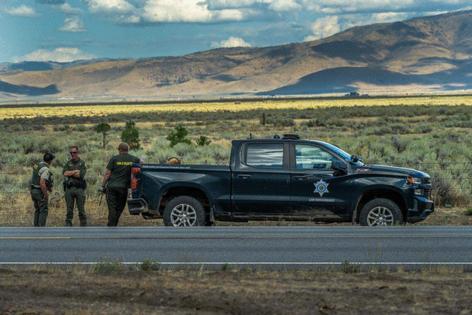
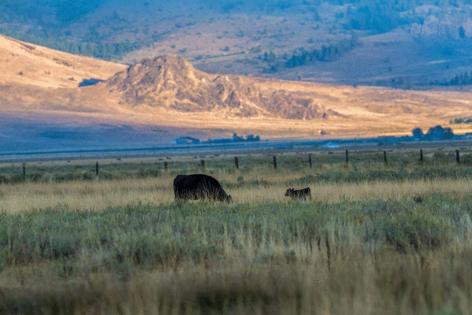
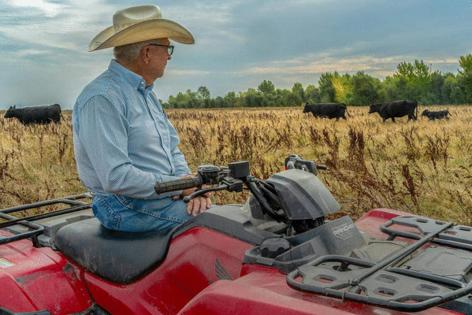
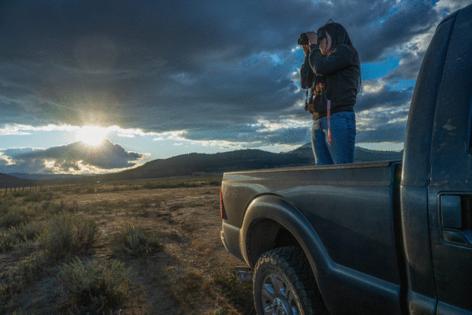
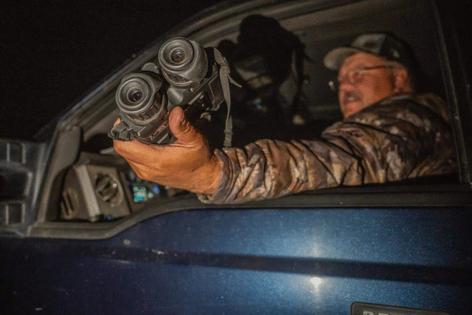











Comments